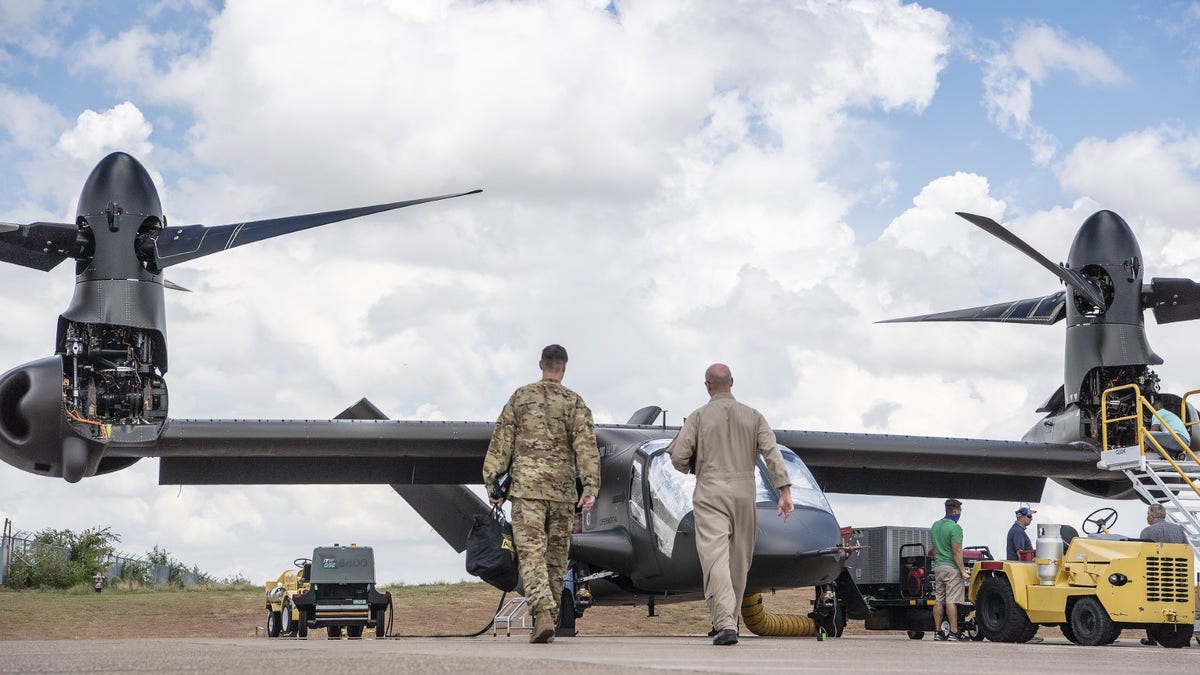newYou can listen to Fox's news articles!
It's an airplane. It's a helicopter. It's both. Meet the Army's new tilt rotor “Flraa” for future long-range air attacks. This is how the Army jumps into the Pacific Ocean and dodges China. Incidentally, there is no such thing in Chinese President Xi Jinping.
With an astonishing announcement, the Army made over 40 generals and opened the door to AI. The Army will bet its future on this radical aircraft. The aircraft's engines either take off and land like helicopters, or rock to fly high and fast like an airplane.
The aircraft was at a pace to be put into the Army's inventory in the early 2030s.
Pete Hegses says West Point, who resigned from overhauling Trump's administration education, “don't overlook”
Then came the Army reforms. On May 1, Defense Secretary Pete Hegses instructed the Army to concentrate more on the Indo-Pacific. In that area, distance and Chinese missile threat rings are locking current helicopters. Air Force Mission – When the army moves to hostile and contested areas by Rotary Wing aircraft, the difficult truth is that there is a gap in the ability to loom the Army.
The Army's new tilt rotor for future long-range air attacks could arrive much faster than expected.
“We can't make a long-range air attack today on a massive scale,” Fort Campbell, Kentucky, commander of the 101st Airborne Division (air raid) in Fort Campbell, Kentucky, said last year.
That is unacceptable given Xi's growing desire for military conflict.
So now the Army wants a revolutionary plane as quickly as possible. On Wednesday, May 7th, Army Secretary Randy George told Congress that he would “want to move to the 2028 time slot” in a few years. Army Secretary Dan Driscoll said he met with major contractor Belle Textron to hurry up and place an order.
The reason is easy to understand. The acronym Army says “Flraa” will fly 1,700 nautical miles without refueling and carry 12 passengers at speeds close to 300 mph. Compare it to the 183 mph Black Hawk helicopter replacing it. For pilots, the extra range, speed and survivability of the tilt rotor are a major improvement in the helicopter. With a tilt rotor, you can land anytime, anywhere, in any condition.
You may be familiar with the V-22 Osprey, which first flew in 1989 and is now flying by the Marines, Navy and US Air Force Special Operations Forces. As the first operational tiltrotor, the V-22 had ups and downs, but doubtful, the V-22 proved itself in the battle in Afghanistan. In another clear example, in 2013, three combat-damaged Air Force MV-22s spit out fuel from South Sudan, Entebbe, Uganda, to save the lives of injured Navy Seals.
It's no wonder the Army was hit by the notion of tiltrotors.
However, the Army's Flraa is an all-new design based on the prototype V-280 Valor, which first flew in 2017. Slightly smaller than the V-22, the 47-foot fuselage is made up of aluminum construction and carbon-fiber composite skin.
For more information about Fox News, click here
A major advancement in “Flraa” lies in the tilt mechanism. The old V-22 has the entire engine nacelle housing pivoted. For Army aircraft, that headache is gone. The two engine nacelles remain on the wings. Only the propeller rotates and toggles between helicopter and plane modes. This is much safer, and the improved rotor design also improves agility and maneuverability in slow flights during helicopter modes.

The Army's new tilt rotor for future long-range air attacks will help improve the Pacific US capabilities.
Another major difference is that the Army tilt rotors are designed as multiple mission aircraft. The door guns on both sides mark it as a dedicated air assault platform. It contrasts with the V-22, which only has a tail gun. The New Army Tiltrotor also comes with what is known as “release effects.” This is a military terminology for various drones, including self-protection decoys released to bypass enemy fires, sensor drones, targets, clogs of electronic warfare, drones to kill weapon drones on the course.
Range capabilities allow Army tiltrotors to drive these drones deep into the battle space. With drone operations in mind, software is important, so planes have an open system digital backbone that allows new systems to be connected at any time.
What's even more interesting is that Flraa has the potential to fly on its own. At 240 knots, you can deploy from Hawaii to the Philippines in 20 hours. In the future, the “Flraa” might be able to fly autonomously as an unmanned aircraft and be transported to the theater by reuniting with the crew at the previous location.
Click here to get the Fox News app
The reason is easy to understand. The acronym Army says “Flraa” will fly 1,700 nautical miles without refueling and carry 12 passengers at speeds close to 300 mph. Compare it to the 183 mph Black Hawk helicopter replacing it.
The Army views the Pacific Islands like a chessboard. If China threatens, tilt rotor “Flraa” can quickly move soldiers to land in the contested area and prevent Chinese troops from taking over.
Now the Army needs to give its radical new plane a proper name.
For more information about Rebecca Grant, click here


